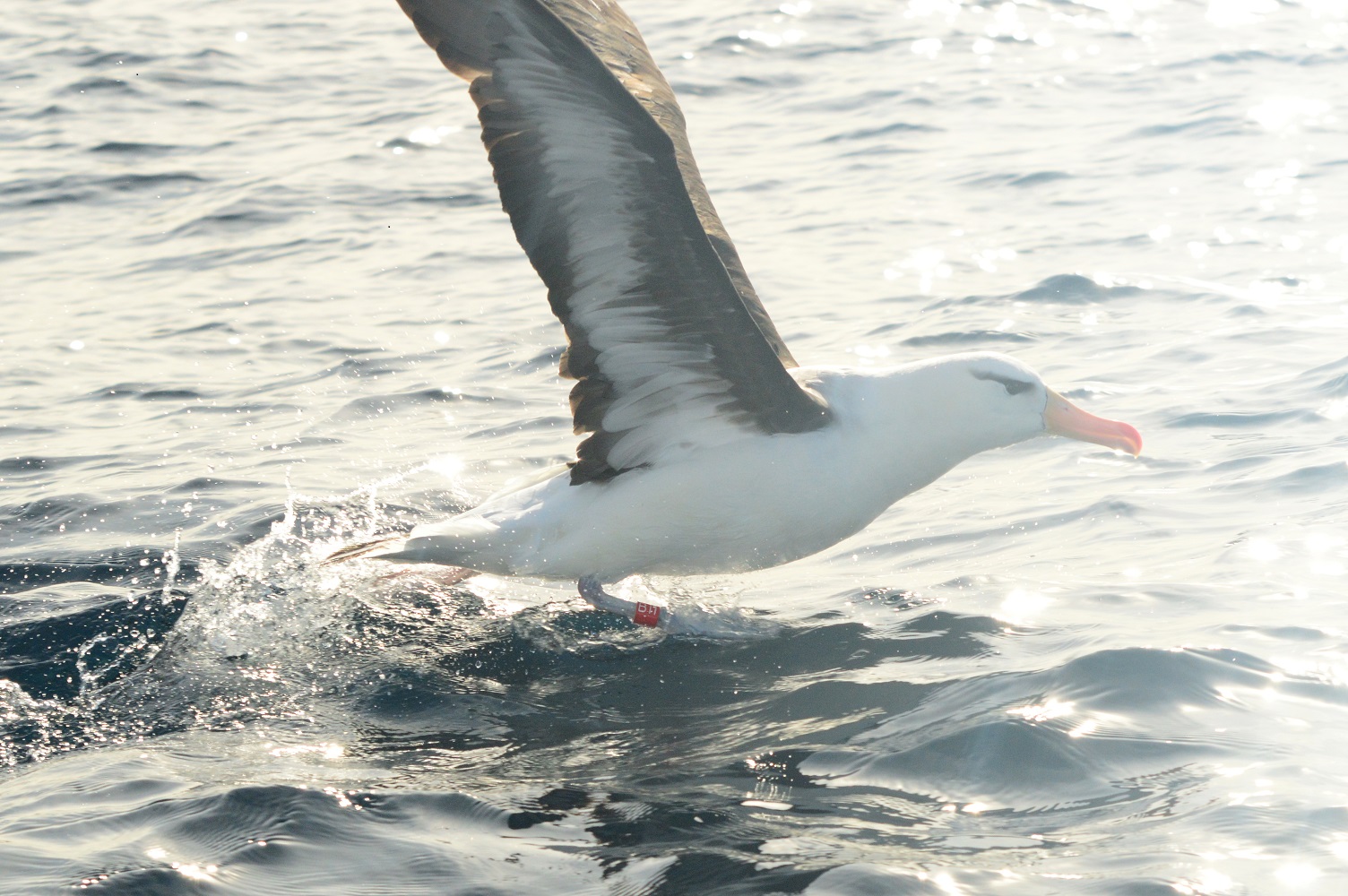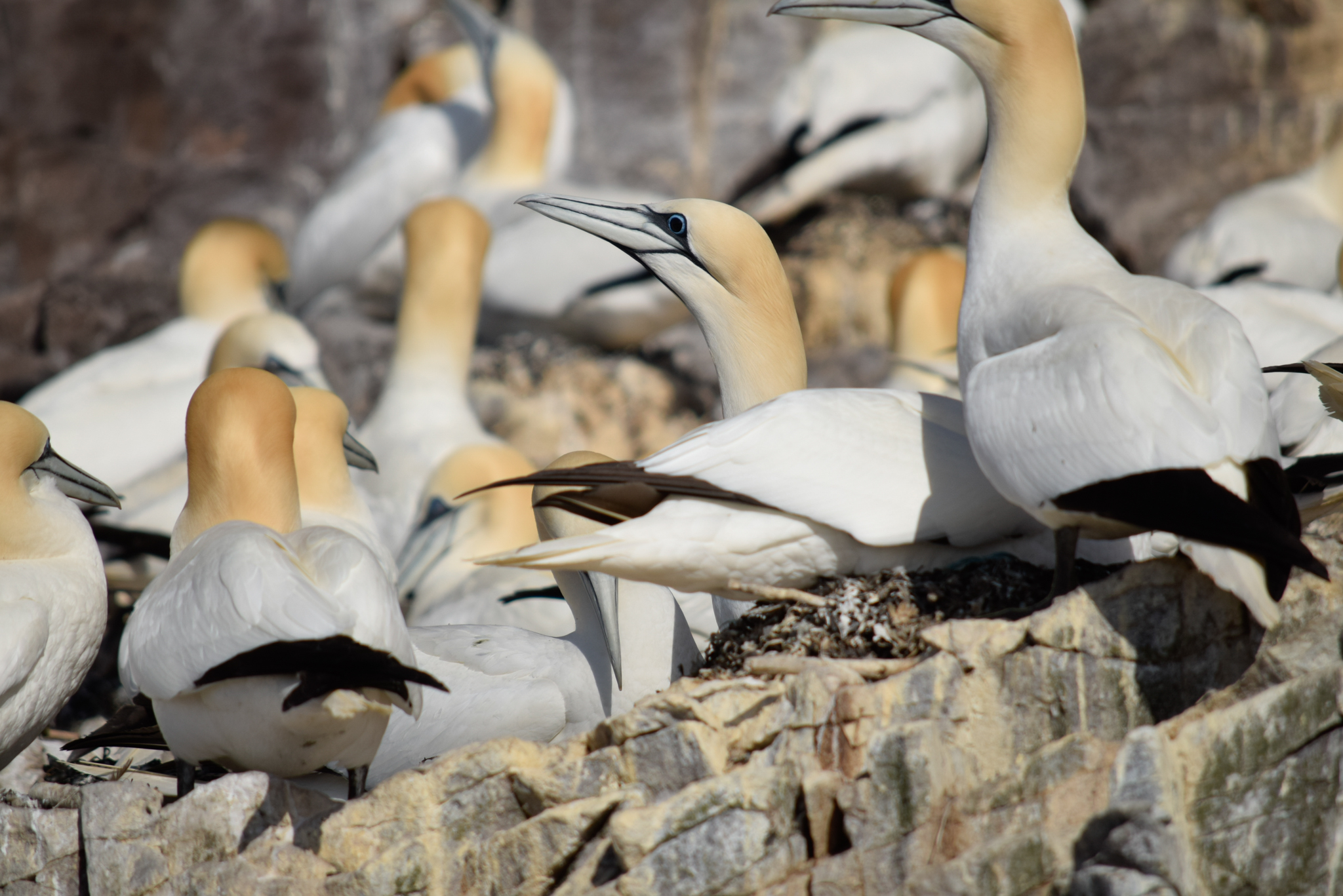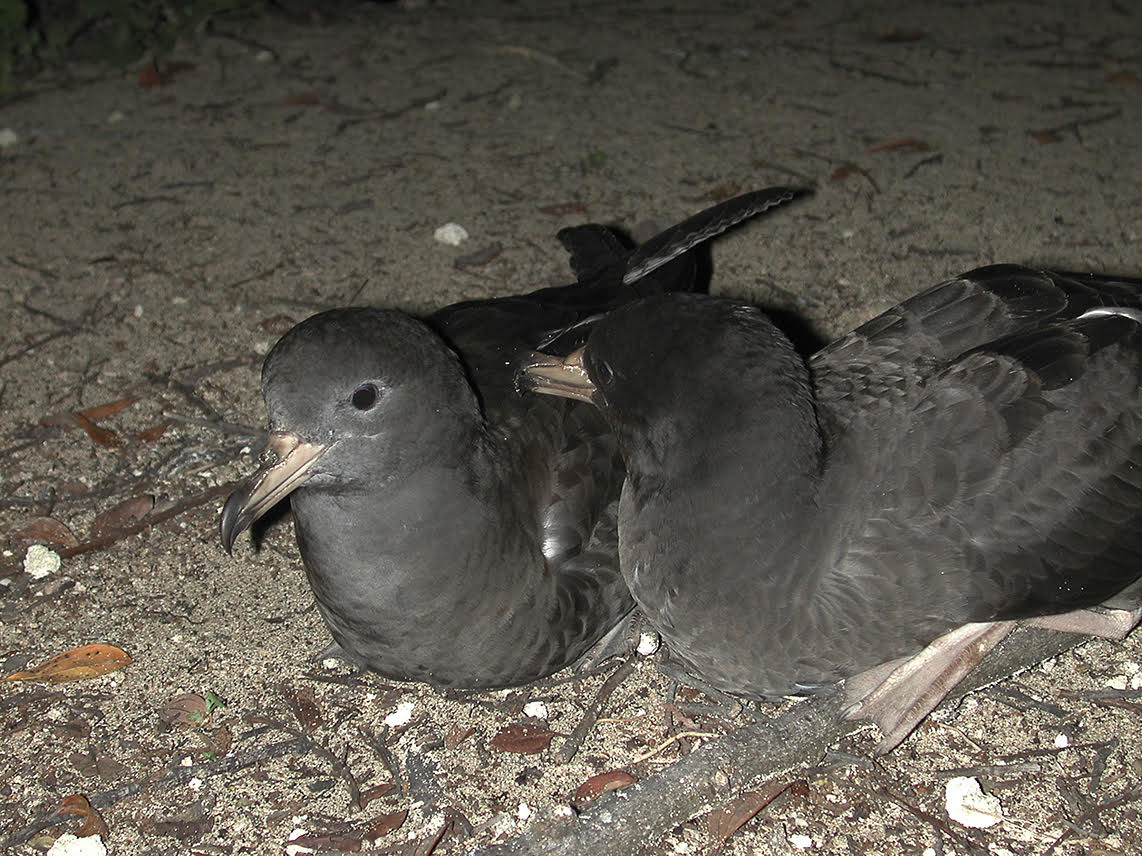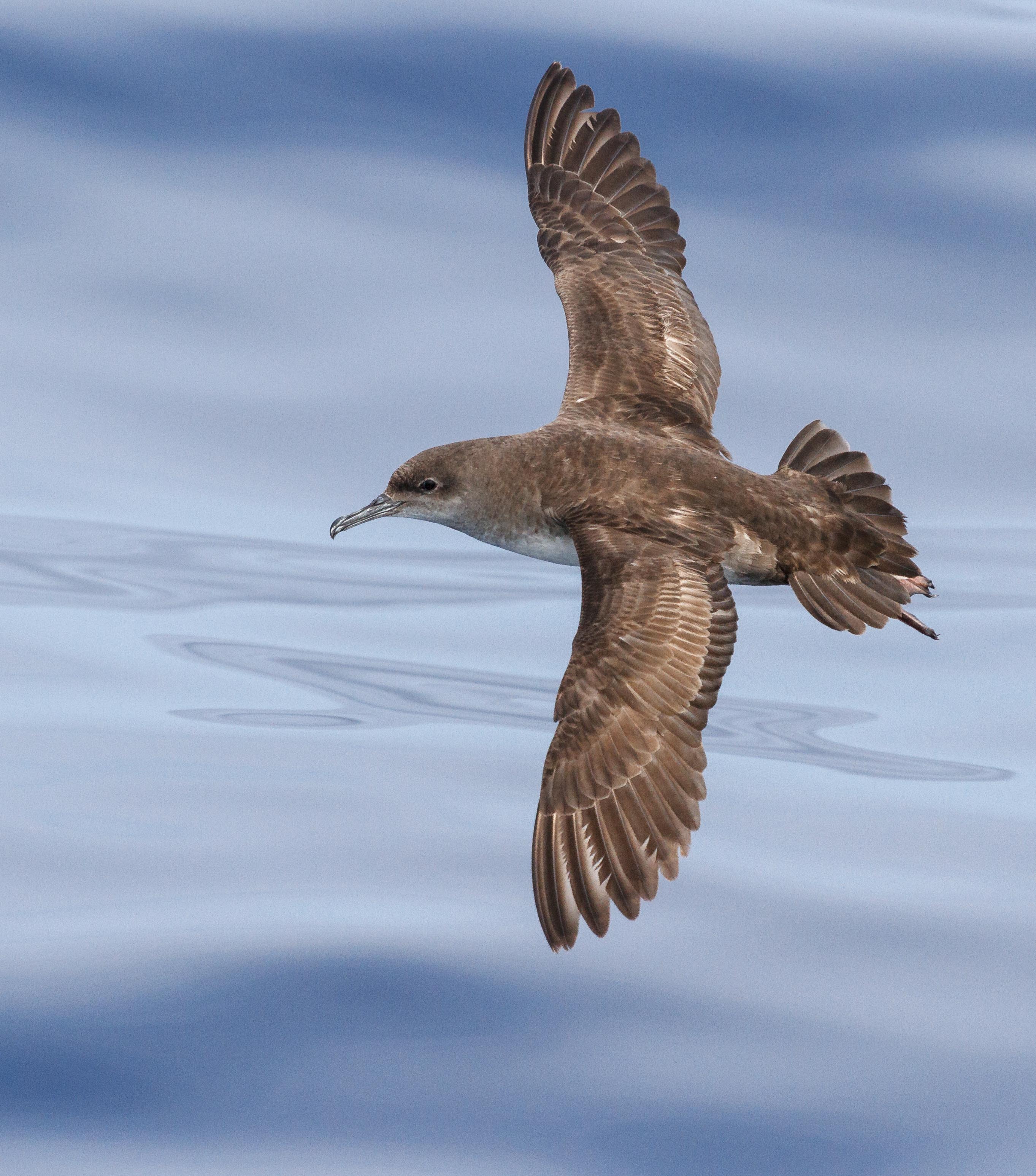
After some sleuthing, Red B11 has been identified as coming from Bird Island in the South Atlantic, photograph by René Rossouw
On 1 June 2023, René Rossouw travelled out to sea with Cape Town Pelagics from South Africa’s Cape Peninsula. At approximately 25 nautical miles (c. 45 km) from Simon's Town, René photographed an adult Black-browed Albatross Thalassarche melanophris with a red leg band, reporting her record to SAFRING (the South African Bird Ringing Unit based at the University of Cape Town). Enlargement of her original high-resolution photograph showed the band to have the inscription B11, after some uncertainty that it could have been B17. ACAP Latest News then got in contact with its “village” of marine ornithologists who have worked on Southern Ocean islands where Black-browed Albatrosses breed in an endeavour to find out the bird’s origin.
Following a run of “sorry, not ours” e-mails, it was pleasing to hear from Andy Wood of the British Antarctic Survey, confirming that the bird is one of theirs, emanating from Bird Island, South Georgia (Islas Georgias del Sur)*. “Red B11 has metal ring 1425138. It is unsexed but was ringed as a chick on its nest on 10 April 2007. First breeding attempt in 2019/20, it failed early with the partner unrecorded. In 2020/21 it successfully fledged a chick with 1480641/YA50. Non-breeder in 2021/22. In 2022/23 it failed by 2 November with the partner unrecorded. All breeding records from the same colony that it hatched from.”
SAFRING processed the record to show the albatross had flown 4838 km from Bird Island, although this will be a minimum travelled as it would not have taken a straight line (click here).
This is not the first time a red-banded Black-browed Albatross from Bird Island has been photographed at sea off southern Africa - read two earlier records from South African and Namibian waters. A satellite-tracked Black-browed Albatross fledgling from Bird Island has also been photographed off South Africa (click here).
With thanks to Paulo Catry, Karine Delord, Janine Dunlop, Kim-Kelly Hunt, Richard Phillips, René Rossouw, Cristián Suazo and Andy Wood.
25 July 2023
*A dispute exists between the Governments of Argentina and the United Kingdom of Great Britain and Northern Ireland concerning sovereignty over the Falkland Islands (Islas Malvinas), South Georgia and the South Sandwich Islands (Islas Georgias del Sur y Islas Sandwich del Sur) and the surrounding maritime areas.

 English
English  Français
Français  Español
Español  Northern Gannets on Bass Rock off the Scottish coast. The black iris (previously blue) of the pictured gannet indicates the bird has survived an infection from Highly Pathogenic Avian Influenza (HPAI) H5N1; photograph by Patricia Serafini
Northern Gannets on Bass Rock off the Scottish coast. The black iris (previously blue) of the pictured gannet indicates the bird has survived an infection from Highly Pathogenic Avian Influenza (HPAI) H5N1; photograph by Patricia Serafini Population monitoring of Flesh-footed Shearwaters is one of the projects to be delivered by the Conservation Services Programme; photograph by Ian Hutton
Population monitoring of Flesh-footed Shearwaters is one of the projects to be delivered by the Conservation Services Programme; photograph by Ian Hutton
 The Critically Endangered Balearic Shearwater Puffinus mauretanicus has been identified in the study as at high risk of exposure to plastics; photograph by Pep Arcos
The Critically Endangered Balearic Shearwater Puffinus mauretanicus has been identified in the study as at high risk of exposure to plastics; photograph by Pep Arcos